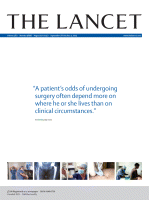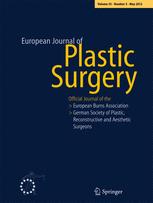Trojahn Køll, S. F. et als.
The Lancet, 2013-09-28, Volúmen 382, Número 9898, Pages 1113-1120
 Autologous fat grafting is increasingly used in reconstructive surgery. However, resorption rates ranging from 25% to 80% have been reported. Therefore, methods to increase graft viability are needed. Here, we report the results of a triple-blind, placebo-controlled trial to compare the survival of fat grafts enriched with autologous adipose-derived stem cells (ASCs) versus non-enriched fat grafts.
Autologous fat grafting is increasingly used in reconstructive surgery. However, resorption rates ranging from 25% to 80% have been reported. Therefore, methods to increase graft viability are needed. Here, we report the results of a triple-blind, placebo-controlled trial to compare the survival of fat grafts enriched with autologous adipose-derived stem cells (ASCs) versus non-enriched fat grafts.
 Spreader grafts (SPG) are widely used for different purposes in rhinoplasty procedures. However, selection of the size of the grafts, trimming and fixation often proved time consuming and difficult. We used an original method of placement of “free” SPG to improve both ease of placement and fine trimming of the grafts. To assess pertinence of this approach, we evaluated retrospectively our rate of correction of the middle third of the nose.
Spreader grafts (SPG) are widely used for different purposes in rhinoplasty procedures. However, selection of the size of the grafts, trimming and fixation often proved time consuming and difficult. We used an original method of placement of “free” SPG to improve both ease of placement and fine trimming of the grafts. To assess pertinence of this approach, we evaluated retrospectively our rate of correction of the middle third of the nose. La cobertura rápida y eficaz de las lesiones es un factor limitante en el tratamiento de grandes quemados. Los autoinjertos siguen siendo el tratamiento de elección pero no están exentos de riesgos. El uso de sustitutos de piel cultivada (SPC) puede llegar a reducir la morbilidad implícita en el uso de autoinjertos.
La cobertura rápida y eficaz de las lesiones es un factor limitante en el tratamiento de grandes quemados. Los autoinjertos siguen siendo el tratamiento de elección pero no están exentos de riesgos. El uso de sustitutos de piel cultivada (SPC) puede llegar a reducir la morbilidad implícita en el uso de autoinjertos.




 Sitio web publicado el
Sitio web publicado el
Los lectores comentan